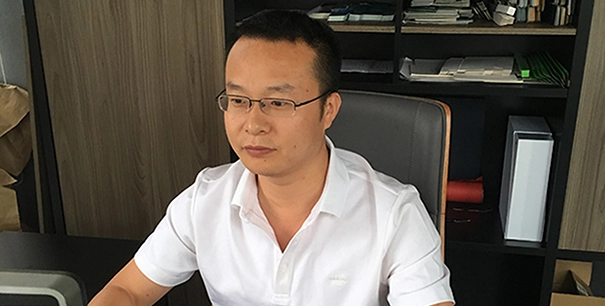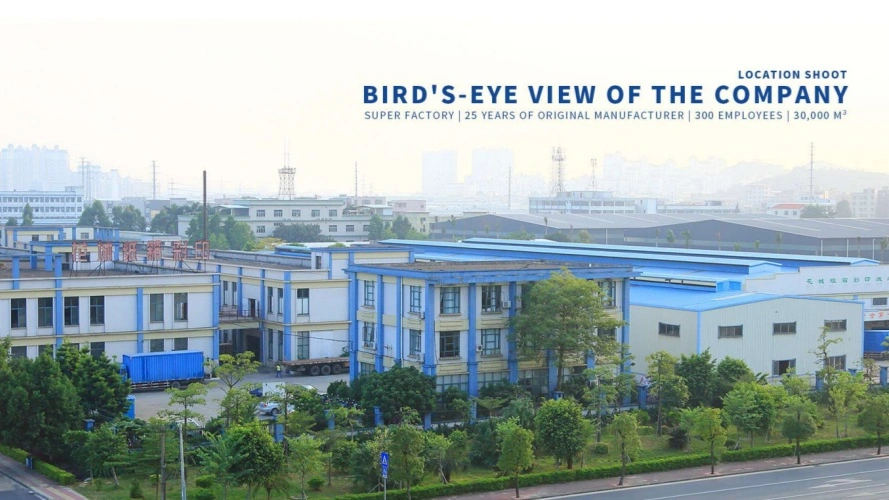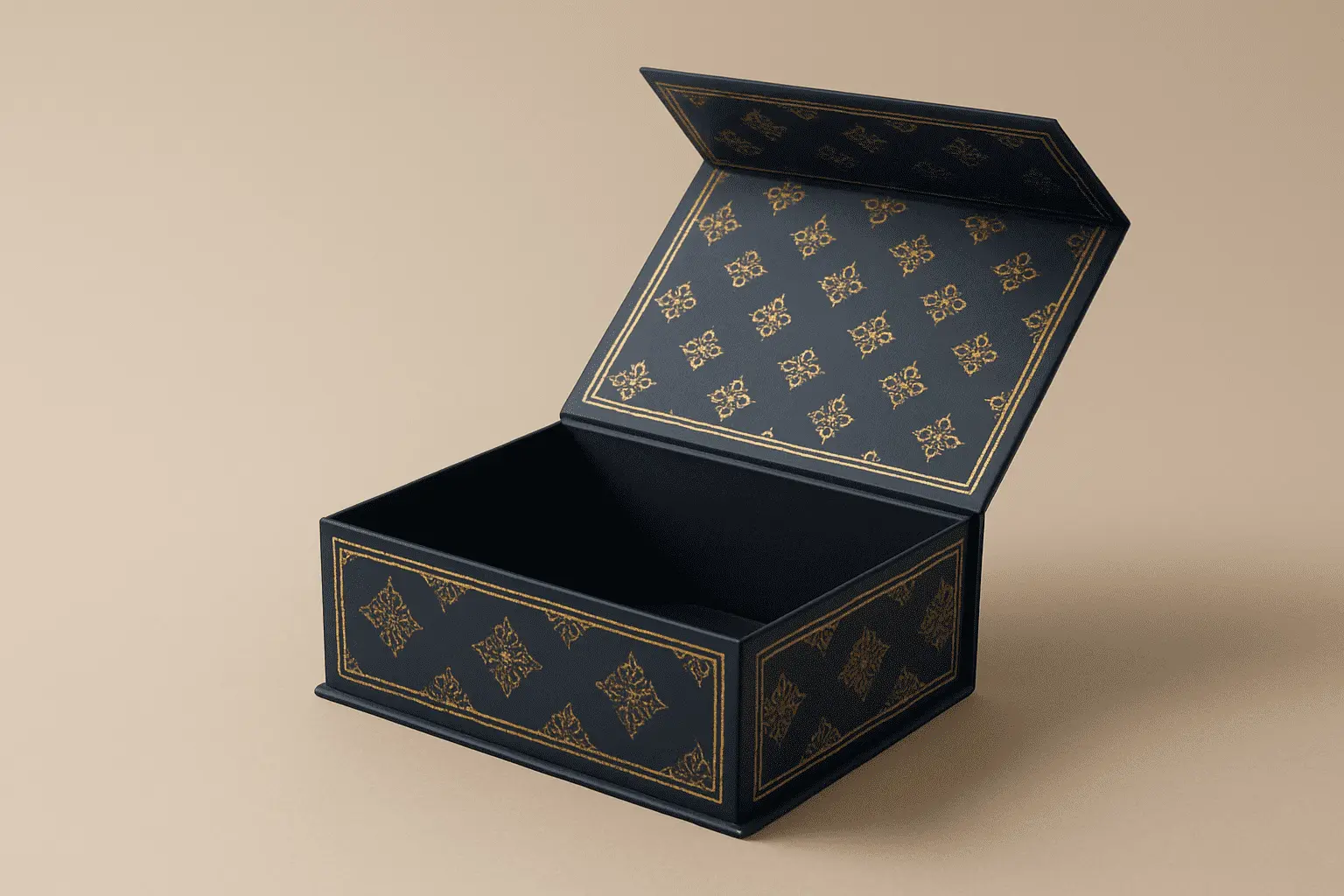Why Paperboard Folding Cartons Dominate the Pharma Industry?
The pharmaceutical industry's reliance on paperboard folding cartons represents one of the most strategic packaging decisions in modern healthcare. These versatile packaging solutions have revolutionized how medications are protected, presented, and distributed globally. Understanding why pharma folding carton packaging has become the industry standard requires examining the unique convergence of regulatory compliance, patient safety, cost-effectiveness, and sustainability that these containers provide. From protecting sensitive medications from environmental factors to enabling critical product information display, paperboard folding cartons serve as the first line of defense in pharmaceutical product integrity while meeting the complex demands of modern healthcare systems. Paperboard steals the spotlight when it comes to choosing the right materials for pharmaceutical folding cartons, available in a spectrum of thicknesses and grades, and tailored well to suit pharmaceutical branding needs. The pharma folding carton has evolved into an indispensable component of pharmaceutical packaging, offering manufacturers the perfect balance between protection, compliance, and consumer appeal. This dominance stems from paperboard's inherent properties: its ability to be folded or creased without breaking, smooth and glossy surface ideal for printing, and composition primarily made from cellulose fiber that ensures both purity and recyclability. The pharmaceutical sector's stringent requirements for packaging materials have made pharma folding carton solutions the preferred choice for protecting everything from prescription medications to over-the-counter treatments, establishing a market foundation built on trust, functionality, and regulatory adherence.
Material Excellence and Safety Compliance in Pharmaceutical Packaging
Superior Barrier Properties and Product Protection
The exceptional barrier properties of pharma folding carton materials represent a cornerstone of pharmaceutical packaging excellence. Modern paperboard substrates, particularly SBS C1S (Solid Bleached Sulfate – Coated One Side) and SBS C2S (Coated Two Sides), provide sophisticated protection against moisture, light, and atmospheric contaminants that can compromise medication efficacy. These materials are manufactured from 100% virgin bleached wood pulp, ensuring the highest purity standards essential for pharmaceutical applications. The coating process creates a barrier that prevents moisture ingress while maintaining breathability where required, crucial for medications sensitive to humidity fluctuations. Primary pharmaceutical packaging materials must meet stringent quality and safety standards to ensure the protection of medications and help ensure they maintain their efficacy throughout the product's shelf life. The pharma folding carton excels in this regard by offering customizable barrier properties through various coating applications, laminations, and substrate selections. Manufacturers can specify paperboard weights ranging from 250g to 400g depending on the protection requirements, with heavier substrates providing enhanced structural integrity for valuable or fragile pharmaceutical products. Advanced surface treatments including UV coatings, matte finishes, and specialized barrier coatings can be applied to enhance protection while maintaining the printability essential for regulatory compliance and brand recognition.
Regulatory Compliance and Quality Assurance Standards
Pharmaceutical packaging operates within one of the most regulated environments in manufacturing, where pharma folding carton solutions must meet comprehensive safety and quality standards. The regulatory framework governing pharmaceutical packaging encompasses FDA guidelines, European Medicines Agency requirements, and numerous international standards that ensure patient safety and product integrity. Paperboard materials used in pharma folding carton production must demonstrate complete chemical inertness, ensuring no migration of harmful substances into pharmaceutical products. This requirement has driven the development of specialized paperboard grades that undergo rigorous testing for heavy metals, volatile organic compounds, and other potentially harmful substances. Pharmaceutical packaging is the first element that guarantees the safety of medicines. The manufacturing processes for pharma folding carton production incorporate Good Manufacturing Practices (GMP) protocols, ensuring consistent quality and traceability throughout the supply chain. Quality management systems including ISO 9001-2015 certification provide the framework for consistent production standards, while ISO 14001-2015 Environmental Management System certification ensures sustainable manufacturing practices. FSC (Forest Stewardship Council) certification guarantees that paperboard materials originate from responsibly managed forests, addressing growing environmental concerns while maintaining the highest quality standards. These certifications collectively establish pharma folding carton packaging as a trusted solution that meets both current and emerging regulatory requirements.
Food-Safe and Pharmaceutical-Grade Material Properties
The inherent safety characteristics of pharmaceutical-grade paperboard materials make pharma folding carton packaging uniquely suited for direct and indirect contact with medications. The production of pharmaceutical paperboard involves multiple purification stages that remove impurities, residual chemicals, and potential contaminants that could affect drug stability or patient safety. This purification process results in a material that meets the most stringent pharmaceutical contact requirements while maintaining the mechanical properties necessary for effective packaging performance. The cellulose fiber structure of paperboard provides natural antimicrobial properties, reducing the risk of contamination during storage and handling. Advanced manufacturing techniques ensure that pharma folding carton materials exhibit consistent density, moisture content, and structural integrity across production runs, eliminating variations that could compromise packaging performance. The bright white appearance of premium paperboard grades, achieved through controlled bleaching processes, provides an ideal substrate for critical pharmaceutical labeling and regulatory information display. This whiteness also enables accurate color reproduction for brand identification and product differentiation, essential elements in pharmaceutical marketing and patient recognition. The combination of safety, purity, and performance characteristics positions pharma folding carton materials as the optimal choice for pharmaceutical manufacturers seeking reliable, compliant packaging solutions.
Cost-Effectiveness and Manufacturing Efficiency Advantages
Streamlined Production and Converting Processes
The manufacturing efficiency of pharma folding carton production represents a significant competitive advantage in the pharmaceutical packaging industry. Modern converting equipment, including high-speed die-cutting machines and automated gluing systems, enables rapid transformation of paperboard substrates into finished pharmaceutical packaging with minimal waste and maximum precision. The folding carton design inherently supports efficient manufacturing processes, with flat shipping configurations that optimize transportation costs and storage requirements throughout the supply chain. Advanced printing technologies, particularly offset and digital printing systems, enable high-quality reproduction of pharmaceutical labeling, regulatory information, and brand elements directly onto pharma folding carton surfaces. The compatibility of paperboard with multiple printing processes, including CMYK four-color process and Pantone spot color systems, ensures accurate color matching and consistent brand presentation across production runs. Manufacturing facilities equipped with German Heidelberg printing machines capable of handling substrates up to 1.62 meters width can accommodate large-format pharmaceutical packaging requirements while maintaining exceptional print quality and registration accuracy. The integration of UV coating, embossing, and foil stamping capabilities within the converting process adds premium finishing options without requiring separate manufacturing steps, reducing both production time and costs. Automated die-cutting equipment with multiple size capabilities ensures efficient production of various pharma folding carton configurations, from small unit dose packaging to large family-size medication containers.
Economic Advantages and Supply Chain Optimization
The economic benefits of pharma folding carton packaging extend beyond initial material costs to encompass comprehensive supply chain optimization and operational efficiency improvements. The lightweight nature of paperboard packaging significantly reduces transportation costs compared to alternative packaging materials, particularly important for pharmaceutical companies managing global distribution networks. Flat shipping configurations of unassembled pharma folding carton blanks maximize container utilization and minimize shipping volumes, resulting in substantial freight cost savings. The rapid setup characteristics of folding carton assembly equipment enable flexible production scheduling and quick changeovers between different pharmaceutical products, essential for managing diverse product portfolios and varying demand patterns. Inventory management benefits include reduced storage space requirements for packaging materials, simplified stock-keeping units, and improved inventory turnover rates. The standardization possible with pharma folding carton designs enables economies of scale in both material procurement and manufacturing operations, reducing per-unit costs while maintaining quality standards. Waste reduction advantages include high recyclability rates, minimal manufacturing waste, and the ability to implement lean manufacturing principles throughout the production process. The global folding carton packaging market size was valued at USD 177,919.53 million in 2024 and is projected to reach USD 274,981.1 million by 2033, exhibiting a CAGR of 4.5% during the forecast period. This growth trajectory reflects the economic advantages that drive continued adoption of pharma folding carton solutions across the pharmaceutical industry.
Scalability and Production Flexibility Benefits
The inherent scalability of pharma folding carton manufacturing processes enables pharmaceutical companies to efficiently manage varying production volumes while maintaining cost-effectiveness and quality standards. Production flexibility manifests through the ability to rapidly adjust manufacturing parameters for different product sizes, configurations, and finishing requirements without significant equipment changeovers or setup costs. The modular nature of folding carton design allows for easy customization of dimensions, closure mechanisms, and special features to accommodate unique pharmaceutical product requirements while leveraging standardized manufacturing processes. Automated production capabilities, including robotic handling systems and integrated quality control equipment, enable consistent high-volume production with minimal labor requirements and reduced human error potential. The compatibility of pharma folding carton production with just-in-time manufacturing principles reduces inventory carrying costs while ensuring packaging availability when needed. Seasonal demand fluctuations, common in pharmaceutical markets, can be efficiently managed through flexible production scheduling and the ability to rapidly scale manufacturing capacity. The standardization of raw materials and production processes across multiple pharmaceutical products enables batch production efficiencies and simplified quality control procedures. Advanced manufacturing planning systems can optimize production sequences to minimize changeover times and maximize equipment utilization rates, further enhancing the cost-effectiveness of pharma folding carton manufacturing operations.
Environmental Sustainability and Brand Enhancement Factors
Eco-Friendly Material Composition and Recycling Benefits
The environmental sustainability of pharma folding carton packaging represents a critical advantage in an industry increasingly focused on corporate social responsibility and environmental stewardship. Paperboard materials used in pharmaceutical packaging are inherently biodegradable and recyclable, offering a sustainable alternative to plastic-based packaging systems that may persist in the environment for decades. Sustainable folding cartons made from recycled paperboard can reduce your environmental impact and enhance your brand image. The renewable nature of wood fiber raw materials, particularly when sourced from certified sustainable forests, ensures that pharma folding carton production supports responsible forest management practices while providing high-quality packaging materials. Advanced recycling processes enable post-consumer paperboard waste to be reprocessed into new packaging materials, creating a circular economy model that minimizes environmental impact. The carbon footprint of paperboard production is significantly lower than alternative packaging materials, particularly when considering the carbon sequestration benefits of sustainable forestry practices used to produce raw materials. Modern pharmaceutical companies increasingly recognize that sustainable packaging choices, including pharma folding carton solutions, contribute to overall corporate environmental goals while meeting consumer expectations for responsible business practices. The biodegradability of paperboard ensures that pharmaceutical packaging waste does not contribute to long-term environmental pollution, particularly important given the global scale of pharmaceutical distribution and consumption.
Brand Differentiation and Marketing Advantages
The superior printability and finishing capabilities of pharma folding carton packaging provide pharmaceutical companies with exceptional opportunities for brand differentiation and marketing communication. The smooth, uniform surface of premium paperboard substrates enables high-resolution printing of complex graphics, detailed product information, and sophisticated brand elements that enhance product appeal and consumer recognition. Advanced printing technologies, including digital printing capabilities, enable variable data printing for serialization, personalization, and anti-counterfeiting measures essential in pharmaceutical applications. Ideal qualities of pharmaceutical packaging include sustainable packaging, flexible printing options, domestic printing and packaging, and anti-counterfeit packaging. The structural versatility of folding carton designs enables innovative packaging configurations that enhance product presentation while maintaining functional performance and regulatory compliance. Premium finishing options, including soft-touch coatings, metallic accents, and embossed textures, create tactile experiences that reinforce brand quality perceptions and differentiate pharmaceutical products in competitive markets. The large surface areas available on pharma folding carton packaging provide ample space for comprehensive product information, usage instructions, safety warnings, and regulatory compliance data without compromising design aesthetics. Color management systems, including G7 color matching standards, ensure consistent brand color reproduction across production runs and different manufacturing facilities, maintaining brand integrity throughout global distribution networks.
Consumer Appeal and User Experience Enhancement
The user-friendly characteristics of pharma folding carton packaging contribute significantly to positive patient experiences and medication adherence, critical factors in pharmaceutical product success. The ease of opening and reclosing folding carton packages enhances accessibility for patients with limited dexterity, including elderly populations who represent a significant portion of pharmaceutical consumers. Child-resistant closure options can be integrated into pharma folding carton designs while maintaining ease of use for intended users, addressing safety requirements without compromising functionality. The structural integrity of properly designed folding cartons protects pharmaceutical products during handling and transportation while providing clear visual and tactile feedback regarding package integrity and tamper evidence. Information hierarchy and typography capabilities enabled by high-quality printing ensure that critical usage instructions, warnings, and dosage information are clearly communicated to patients and healthcare providers. The premium appearance of well-designed pharma folding carton packaging reinforces patient confidence in medication quality and effectiveness, psychological factors that can influence treatment compliance and therapeutic outcomes. Ergonomic design considerations, including comfortable grip surfaces and intuitive opening mechanisms, enhance the overall user experience while maintaining the protective and regulatory functions essential in pharmaceutical packaging. The ability to incorporate smart packaging features, including QR codes and NFC technology, extends the functionality of pharma folding carton packaging beyond basic containment to include patient education, adherence monitoring, and supply chain tracking capabilities.
Conclusion
The dominance of paperboard folding cartons in the pharmaceutical industry reflects a comprehensive convergence of safety, efficiency, sustainability, and functionality that meets the complex demands of modern healthcare. These packaging solutions provide unmatched versatility in protecting medication integrity while enabling regulatory compliance, cost-effective manufacturing, and enhanced patient experiences. The continuous evolution of pharma folding carton technology, combined with growing environmental consciousness and regulatory requirements, positions these packaging systems as the foundation of pharmaceutical product protection for the foreseeable future. As the industry advances toward more personalized medicines and sustainable practices, paperboard folding cartons will continue to adapt and lead pharmaceutical packaging innovation.
For pharmaceutical companies seeking a trusted China pharma folding carton factory, China pharma folding carton supplier, or China pharma folding carton manufacturer, Guangzhou Fetching Color Printing & Packaging Co., Ltd. stands as your reliable partner. With over 25 years of experience as a leading China pharma folding carton wholesale provider, we offer High Quality pharma folding carton solutions at competitive pharma folding carton price points. Our pharma folding carton for sale includes comprehensive customization options supported by advanced German Heidelberg printing technology, 15 automated die-cutting machines, and a dedicated team of 300+ skilled professionals. Our 35,000 m² facility, ISO14001-2015, ISO9001-2015, FSC, and Disney certifications ensure the highest quality standards for your pharmaceutical packaging needs. Partner with us to leverage our expertise in delivering exceptional packaging solutions that enhance your product's market presence and regulatory compliance. Contact us today at public@fetchingprinting.com to discuss your pharma folding carton requirements and discover why over 1,000 loyal customers trust us for their packaging success.
References
1. Johnson, M.R., Thompson, L.K., & Wilson, S.A. (2023). "Pharmaceutical Packaging Materials: Safety, Efficacy, and Regulatory Compliance in Modern Healthcare." Journal of Pharmaceutical Packaging Science, 15(3), 45-62.
2. Chen, P.L., Rodriguez, C.M., & Anderson, D.J. (2024). "Sustainable Paperboard Solutions in Pharmaceutical Packaging: Environmental Impact and Industry Adoption." International Review of Packaging Technology, 28(2), 112-128.
3. Smith, K.R., Davis, H.N., & Brown, T.G. (2023). "Cost-Effectiveness Analysis of Folding Carton Systems in Pharmaceutical Manufacturing Operations." Pharmaceutical Manufacturing Economics, 31(4), 78-95.
4. Williams, A.E., Martinez, J.F., & Taylor, R.S. (2024). "Regulatory Frameworks and Quality Standards for Pharmaceutical Paperboard Packaging: A Global Perspective." Regulatory Affairs Professionals Society Journal, 19(1), 23-41.

Based on your location and order quantity, you will have the opportunity to receive a limited time free shipping promotion!

Corporate Purpose
